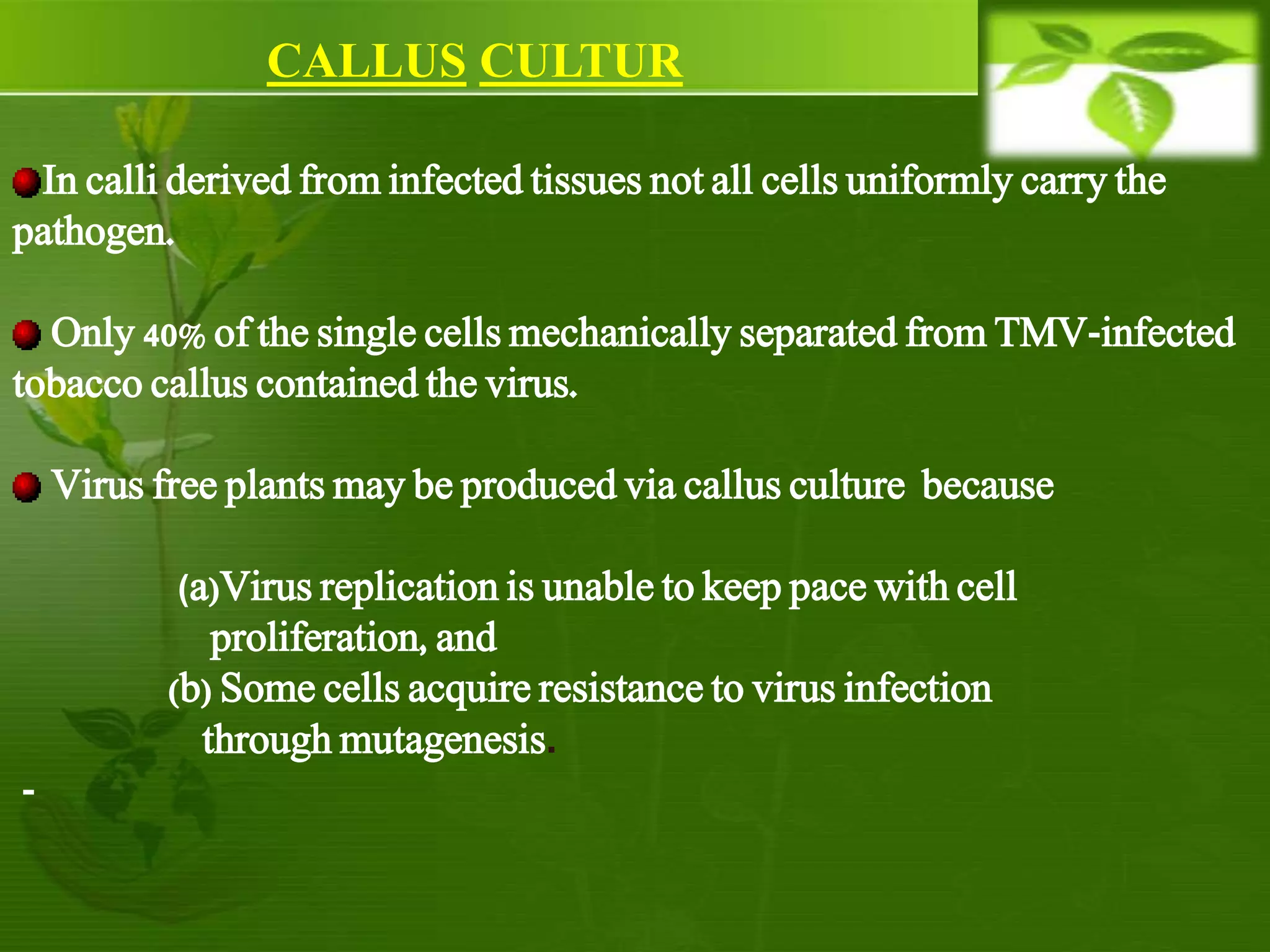This document discusses the production of virus-free plants through plant tissue culture techniques, including methods such as heat treatment, meristem tip culture, and chemotherapy. It covers the history of these techniques, factors affecting virus eradication, and virus indexing methods, highlighting the role of tissue culture in eliminating viral diseases. Overall, meristem tip culture is presented as the most reliable method for producing healthy plants.
























